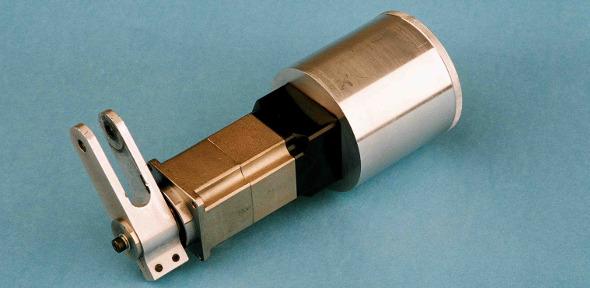
The Department's Professor Malcolm Smith has been working on steering compensation for high-performance motorcycles. An article on the subject has recently appeared in the IEEE Control Systems Magazine reporting on joint work of the Cambridge and Imperial College control groups.
The article proposes the use of a "passive mechanical steering compensator" to simultaneously control both the "weave" and "wobble" modes of oscillation. The compensator exploits the "inerter" concept and device previously developed by Malcolm Smith in the context of vehicle suspension.
It is well-known that motorcycles can exhibit oscillations under certain operating conditions that may be lightly damped or even unstable. Such oscillations can limit the lap times achievable by riders of racing machines. They also present serious safety risks and have been the cause of accidents. The most important of these modes are wobble and weave. Wobble is a steering oscillation that is reminiscent of the caster shimmy that occurs in the front wheels of a supermarket trolley, while weave is a fish-tailing type motion involving roll and yaw. The frequency of the wobble mode is of the order 8 Hz, while the weave frequency is about 3 Hz, where the exact figures depend on the speed and type of machine. Motorcycle design necessitates trade-offs between weave and wobble. For example, a conventional steering damper tends to stabilise wobble but destabilise weave.
The inerter is a passive, mechanical device with two terminals (attachment points) with the property that the equal and opposite applied force at the two terminals is proportional to the relative acceleration between them. In rotational form, the inerter provides a torque proportional to relative angular acceleration. The inerter, spring and damper, give an exact analogy with the capacitor, inductor and resistor in electrical circuits. The most general, realisable mechanical impedance can be built with springs, dampers and inerters (but not with springs, dampers and masses, since the mass element effectively has one only moveable terminal). A number of contrasting embodiments of inerters have been built in the Engineering Department.
Simulations carried out together with Imperial College have shown that the inerter has a roughly opposite tendency to the damper regarding steering oscillations. Namely, the inerter is stabilising for weave but not for wobble. The key idea proposed in the article is to employ an inerter in series with a damper tuned in such a way that the weave mode damping is improved by the inerter and the wobble mode damping is improved by the damper. A prototype steering compensator has been built and tested in the Engineering Department. A full technical paper on this work has recently appeared in S. Evangelou, D.J.N. Limebeer, R.S. Sharp and M.C. Smith, 2007, Steering compensation for high-performance motorcycles, Transactions of ASME, Journal of Applied Mechanics, vol. 74, 332-346.

